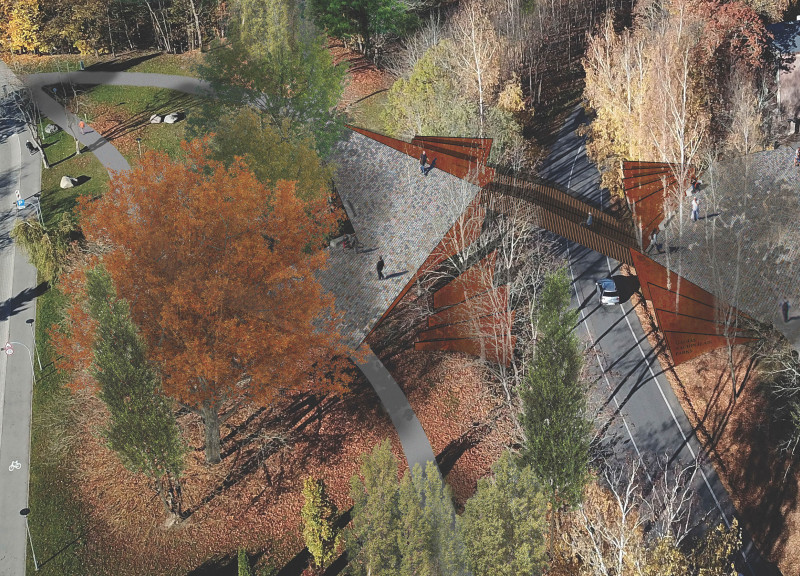5 key facts about this project
The design for Gaujаs Nacionālais Parks features a gateway bridge that interacts thoughtfully with its setting. Located within the national park, it serves both as a passage and as a notable feature that guides entrance into the natural surroundings. The bridge’s design emphasizes the experience of those who traverse it, weaving a narrative that connects visitors with the landscape.
Conceptual Framework
A pinched passage characterizes the bridge, narrowing the viewer's perspective as they approach. This design choice creates a focal point that invites reflection. As visitors move forward, they are gradually introduced to the landscape, enhancing their connection to the environment. The manipulation of sightlines enriches the experience as each step reveals a new view.
Structural Elements
Steel serves as a primary component of the bridge, with outcrops and sequential fins defining the passageway. These steel features provide necessary support while also creating plazas on either side. The plazas encourage social interaction and offer spaces for pause. Visitors can gather, rest, or simply enjoy the surroundings before continuing on their way.
Wayfinding Integration
Wayfinding information is cleverly integrated into the steel fins. This practical aspect helps guide visitors to various destinations in the park. The wayfinding system supports navigation and strengthens the bridge’s role as a connector within the landscape. It fosters a more enjoyable exploration of the park, allowing users to feel oriented and informed.
The bridge operates as both a functional pathway and a distinct feature of the park. Its design encourages engagement with the landscape, highlighting a careful balance between structure and nature. The visitor experience becomes a thoughtful journey, marked by intentional spaces that promote connection and interaction in Gaujаs Nacionālais Parks.






































